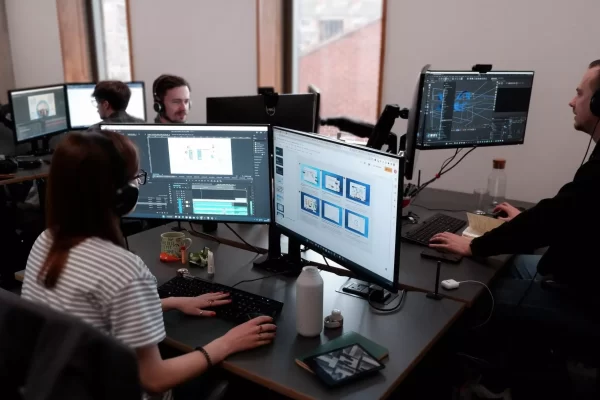Building a home requires tools. The same idea applies to starting a business. Your project requires a technology stack.
It’s like being a fantastic cobbler yet wearing the worst shoes. With the right IT stack, you can begin and expand your firm rapidly. The platform will handle many queries without crashing.
What does the term “tech stack” mean?
The technological stack is a collection of programming languages, frameworks, libraries, and tools. Every program has two parts: server-side and client-side, or front-end and back-end.
Think about a home… Your application’s back-end is the bricks you create. It is the foundation for your future growth.
The building’s front-end façade. You have a startup product with enough living space for a megapolis.
What to consider when choosing your startup’s technology stack?
#1:Budget
As a start-up, your money is generally divided between development and marketing. So, here are some important facts concerning development expenses.
- The cost of technology
As a company entrepreneur, you don’t want to squander money on new technology. So, using open-source solutions is the smartest move.
The beauty of open-source is that the original source code is freely accessible.
Open-source benefits:
- Cost-effective
- Evolving
- Customizable
- Lasting
Remember to consider the expected lifespan of open-source technologies before selecting them for your company. Check whether significant firms are utilizing a specific programming language and framework.
- Developers’ pay
Okay, let us explain: the more popular a technology becomes, the more developers there will be on the market. Popularity increases competition and lowers development pricing. So it’s not difficult to hire a react js developer, the labor market is quite wide.
#2: Community
Make sure the technology you choose has a lively and engaged community. Overall, the community reflects the technology. If it’s horrible, the community’s bad.
For a startup developer, this network shows how rich the technology is for learning materials. The network also helps startups with technical challenges.
Our team works with one of the most active communities: Ruby. A startup needs a community, we can promise you. They are “startup technologies” thanks to Ruby communities and the RoR framework.
#3: Market time
Based on our experience building several firms, we can say that speed is important for ANY company.
Why?
There are two reasons:
- First, others may be doing the same. And the first one to launch will win;
- Second, a startup budget is finite, thus the longer you spend creating, the more money you’ll spend.
That’s where foreign funding may help. If you aren’t bootstrapping, seeking funds before development may be prudent.
A start-up should not waste time in getting their product/service to market, since if someone has a comparable concept, the race is on. As a startup development business, we recommend choosing technologies that are simple to use and offer many helpful third-party connectors.
Our company’s traditional web technology stack for launching startups:
- Ruby, Rails, PostgreSQL
- React, Angular, Vue and Node.js are examples of client-side JavaScript.
- Docker, Capistrano (hosting, monitoring)
#4: Scale
You want to expand your startup’s user base, right? So picking a scalable programming language is a necessary.
What does a scalable product mean? A scalable application, whether mobile or online, should be able to handle many server requests fast.
Consider a scenario where your product meets 100 daily requests. But will this keep happening if you get traction and obtain more orders? What if it fails at the worst time? Startup dread.
Use scalable programming languages and frameworks like PHP, Python, or Ruby to avoid such horrors.
For instance, you may opt for Python web development services if you need to build a high -load web application.
#5: Job size
The proper startup aim should be incremental company development, not a big firm all at once.
Creating an MVP (Minimum Viable Product) can help you gather feedback from your target audience and find out what functionalities are lacking.
Your tech stack should be able to create not just a rudimentary MVP but also the mature startup of your dreams.
#6 Project Type
Whether you intend to establish a marketplace, a social network app, or a file hosting service, your technological stack will be critical.
Ruby is a good choice for constructing a marketplace. An e-commerce website built using Ruby on Rails and React is ideal. Some examples of Rails-based service markets include Fiverr, Airbnb, Salita, Shopify, and Couchsurfing.
Python is the ideal choice for building social networking apps or file hosting services. Check out Instagram or Dropbox.
Why not make a game? Want to make a Minecraft? So go with Java.
You may also look at the tech stacks of existing firms. You can see them on Stackshare, a portal that shows firms’ software tools.
#7: Web versus.
It’s an eternal question! Only by knowing your target audience properly can you make a judgment.
Use a mobile or web app? Analyze your target market and choose a product that suits them.





